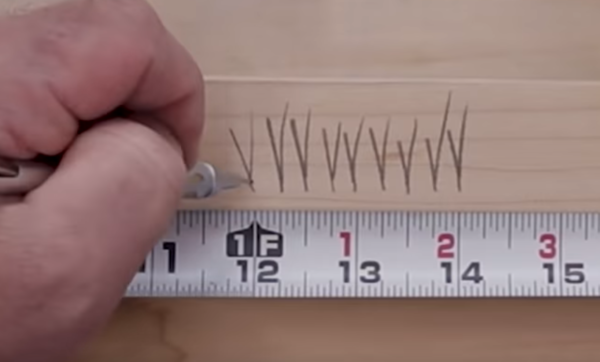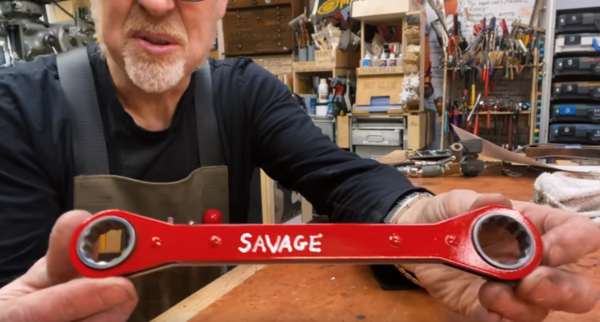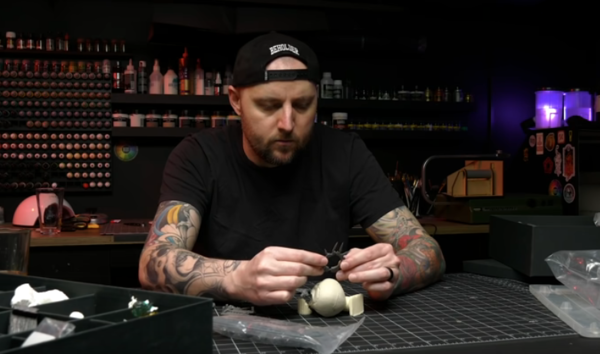Marking with a Modified Crow’s Foot
Gareth's Tips, Tools, and Shop Tales - Issue #76
Please help me spread the word about this newsletter. Share one of the tips you liked on your social media and then link back to my newsletter’s home page. It’s a huge help. Thanks!
Marking with a Modified Crow’s Foot

A mark you can count on.
In this Inspired Woodcraft video, Jody describes his use for what he calls a modified crow’s foot. Everyone has their own means of marking: the ubiquitous tick mark, the fading tick mark (where the mark point is darker and the tail fades out), and the crow’s foot. Many a carpenter and woodworker can tell you why the crow’s foot is the superior mark, but Jody points out that a quick succession of such marks can end up creating a fat or otherwise unclear mark point. In a modified crow’s foot, you don’t bring the second line of the “V” all the way down to the point, so that mark point stays as thin and precise as possible.
Organizing Your Thinking Around Organizing

When off the top of your head is an organizing principle.
In this Tested video, Adam Savage talks about expanding your approach to organization to include your thinking around organization. As part of this, he brings up something he’s shared before (which I have shared here): When considering where to store a tool, go with the first place that comes to mind. The project in this video is a simple one: painting a mill wrench so that he knows at a glance which is the proper orientation for tightening. As he points out, orienting it the wrong way and then flipping it is only a few seconds of lost time, but it’s a mini frustration that can take you out of the flow. As he point out, you cannot alleviate every type of shop frustration, but you can minimize them by solving the ones that are addressable, as he does with this little project. In deciding how to mark the wrench for identification, he applies his “first thing you think of” rule. When wondering where to mark the tool and with what, his first thought was: Red paint on the tightening side. So that’s what he did.
Sometimes, Let Your Materials Do the Talking

Fiddling until you figure it out.
In video on the Black Magic Craft channel for tabletop game crafters, Jeremy makes a great point that applies to many types of making. Sometimes, if you’re feeling creatively stuck or uninspired, the best answer may be to play, tinker, jam your way towards a project. In his case, he wanted to build something but couldn’t think of what. So, he got out his model bits boxes and just started fiddling around until he found some parts that he really liked and then he built a piece of scatter terrain around those. This can apply to lots of different types of making that allow for improvisation. Just start in on something and tinker your way towards something you like.
TOYS! Olfa Ratchet-Lock Utility Knife

With this item, I have now recommended three different OLFA utility knives. I have previously covered the OLFA 9150US SAC-1 9mm and the OLFA 1072198 LA-X 18mm knives. I just can’t get enough of these tools. There is a reason they frequently appear on the recommended tools lists of many makers. They are well-designed, reliable, safe, easy to use, and super versatile. I would never go back to a fixed-bladed utility knife. It’s nice having the different sizes and configurations for handling different jobs. This OLFA, the 5003 L-1 18mm Ratchet-Lock, is their heavy-duty model. It has a secure locking mechanism and is made for things like cutting roofing tiles, drywall, vinyl, and the like.
Makers Muse: Christmas All Year

Had a particularly great day? Light ’em up!
Seeing some of the houses in my town still shining their Christmas lights at night (which they’re probably dreading taking down), reminded me of a great suggestion Father Guido Sarducci (played by the great Don Novello) once made on SNL. Keep your lights up all year long, and when you have a particularly great day, light them up so that the neighbors can share in your happy moment.
The Big List of Women Makers on YouTube

RiverTechJess working on a DIY enviromental sensor system.
Shop Talk
The story I shared last issue of a very fatigued general contractor putting his hand beneath a board to see if the blade was deep enough (thankfully, it wasn’t!), really got a visceral reaction from other readers who work with saws. Sorry about that!
My friend, Michael Shiloh shared this:
“Your ‘Shop Tale: They Almost Called Him Stubby’ reminds me of a personal rule which I developed working on Survival Research Lab shows years ago: Whenever I find myself saying “I’ll just do this and then I’ll stop for the night,” it’s time to stop for the night, before I do that last thing, because often that’s a good indicator that I’m too tired to continue and I should stop before I make a mistake. I still use that rule and teach it to my students.”
***
Reader Adam Y, and several other readers following up on the item about writing a room’s paint colors on the back of a light switch plate:
“Love the paint color notes on the back of the switch plate. One other bit of data you can record there is the breaker number that corresponds to your Mains panel. Makes things so much faster and easier when you don’t have to guess which breaker to turn off to not inadvertently shoot yourself with 120V for a simple switch repair. ”
01/21/21(Gareth’s Tips, Tools, and Shop Tales is published by Cool Tools Lab. To receive the newsletter a week early, sign up here. — editors)









